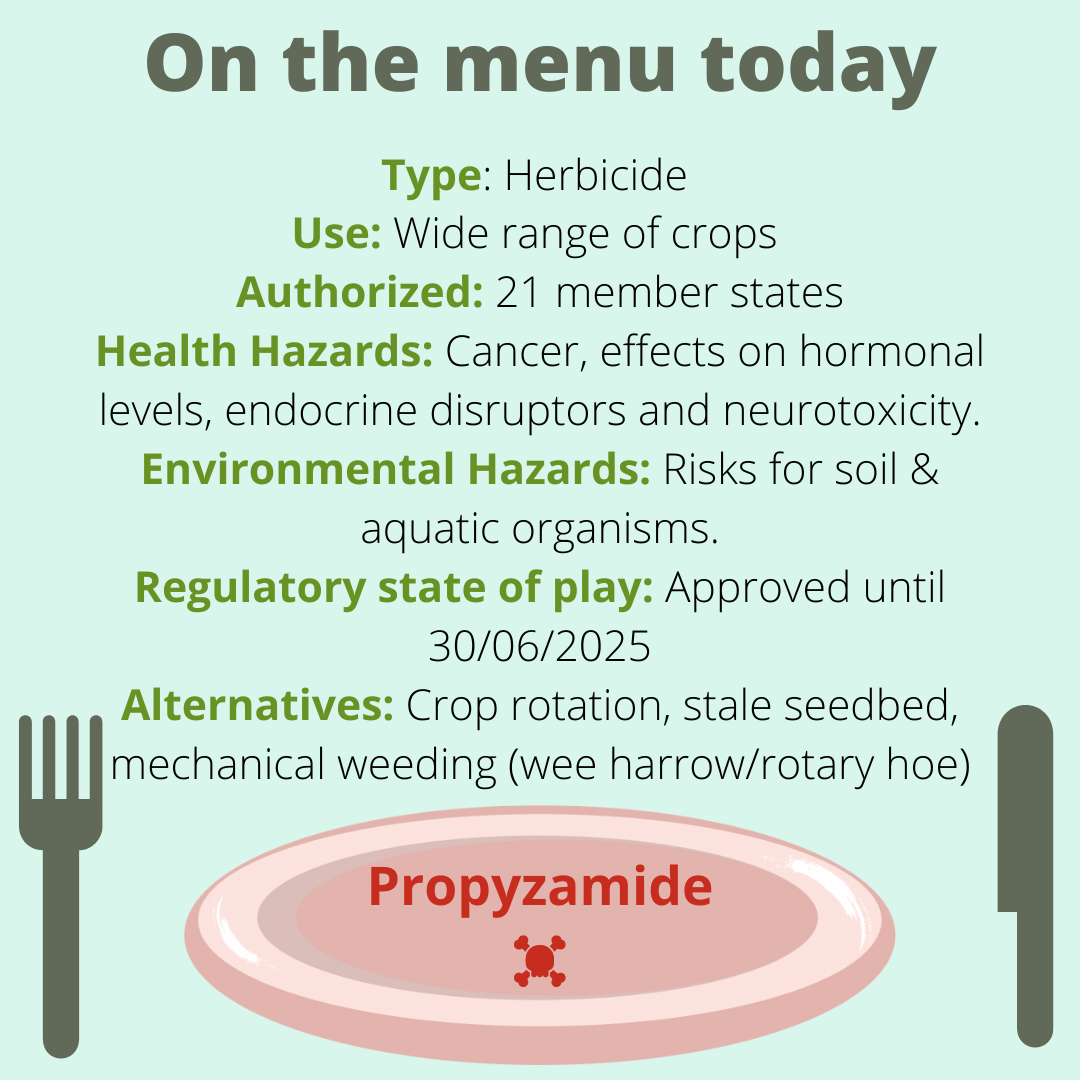Type: Herbicide
Health Hazards: Linked to causing cancer ("C2" classified carcinogen). Connected to thyroid tumours, adenomas and carcinomas; many histopathological findings. Effects on hormonal levels and endocrine glands. Endocrine disruptor according to the EU Joint Research Centre (JRC). Concern for neurotoxicity: reduced motor activity in acute toxicity study; no chronic studies available.
Environmental Hazards: High risks for soil organisms. High risk to aquatic organisms living in surface waters. Classified as very toxic to aquatic life with acute and long-lasting effects. Lack of data for risks for birds, honey bees, earthworms, and non-target terrestrial plants. Concerns for long-lasting in the environment, and contamination of groundwater (groundwater contamination by soil metabolites of Propyzamide; substance persistent, DT50 up to 120 days; Volatilisation). In April 2025 the Danish EPA reported high groundwater concentrations of propyzamide and its degradation products - above the allowed EU limit.
Exposure: Authorised in 21 member states.
Residues present in food: 56 Maximum Residue Limits (MRLs) above the Level of detection (LOD) of 0.01 mg/kg are established, ranging from 0.002mg/kg to 0.60 mg/kg per product (NWVA: low evidence; top 20 highest MRLs).
Regulatory State of Play: Approved until 30/06/2025, prolonged once again till November 2027.
Use: A residual, systemic post-emergent herbicide i.e., it is used prior to planting directly to the soil and has long-lasting soil activity. It is used for a wide range of crops.
